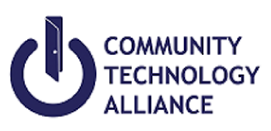Funders are starting to demand better data. Are you ready?
November 8, 2017
When organizations deal with an issue as complex as homelessness, it’s challenging to collect and analyze your data. While cleaning up your data may not feel as urgent as cleaning up lives, it’s important to remember the huge impact that clean data has on your bigger goals.
Why clean data is becoming a mandate
If you’re funded by HUD, you’re already dealing with their mandate toward better data. But even if that’s not one of your funder’s requirements, it should be at the top of your priorities. Why? Without clean data, you won’t know which services are working. You won’t be able to track which segments of the population are growing. Finally, you won’t be able to share your progress with your community or funders.
You want answers to these questions, but the last thing you want to do is divert money from already tight resources and spend more money on another tech platform. Thanks to open source tools, you can create solutions that work within your existing systems.
Helping communities make sense of their data, using existing systems.
In our last blog, we wrote about helping The Coalition of Homeless Service Providers Coalition. “We drastically improved our data, said Katherine Thoeni, the Coalition’s Executive Officer. “It’s gone from a grade of C to an A. It’s high quality data.”
Because the Coalition is now using Coordinated Entry, individual programs have become a gateway to all programs, everything from veteran services to families and youth programs.
After filling out a survey, clients are directed to the services or housing intervention that best suits their needs. The result? Organizations are now communicating better and clients are served faster. “Before we launched CTA’s HOME and created a Coordinated Entry System, 2,300 individuals would try to get into individual programs and would get put on individual waiting lists. Today, after housing 107 people and removing them from the active list, we have 793 remaining. This number tells us we have a good percentage of our identified homeless population.”
Increasing communication between organizations and getting more clients on the Active List
“We’ve expanded our reach into the homeless population,” said Thoeni. “Between Coordinated Entry and CTA’s mobile App, HOME, we’ve seen more assessments being done through places that were previously unreachable.”
The Coalition is now able to access more VI-SPDAT data from hospitals, police and shelters- organizations that use a different platform and were formerly not accessible. Using HOME, any program can collect and upload client and VI-SPDAT data directly to the Coalition. “If a program enters a client’s info,” said Thoeni, “they can let the client know whether he’s on the active list, or if he’s not, they can administer the VI-SPDAT then and there.”
Expanding outreach collects more data. Here’s what to do with it.
The Coalition’s data is 98.5% clean, which means that any analysis is extremely accurate and insightful. “We’re able to adjust and fine tune programming based on what we learn from this data.” They’ve also been able to:
- Top of Form
- Bottom of Form
- Compare 2016 system performance measures against 2017 system performance measures
- Share the data visually with the community at large so anyone can understand it
- Help funders, politicians and citizens understand population trends and what’s impacting homelessness
Data can be challenging to collect and analyze. When data isn’t clean, or when it’s been poorly analyzed, it becomes abstract and useless. It’s critical to view data not just as another funding requirement to fulfill, but as an essential tool in getting the most out of your existing systems resources and making a bigger impact. It’s critical to understand how to make data and policy initiatives work on an operational level.
“CTA is not just technology,” adds Roxanne Wilson, the HMIS Data Coordinator at Coalition.
“They’re also policy. They’re helping us deal with both worlds.”
What’s your relationship with data? Is it helping you or holding you back? Share your story.

